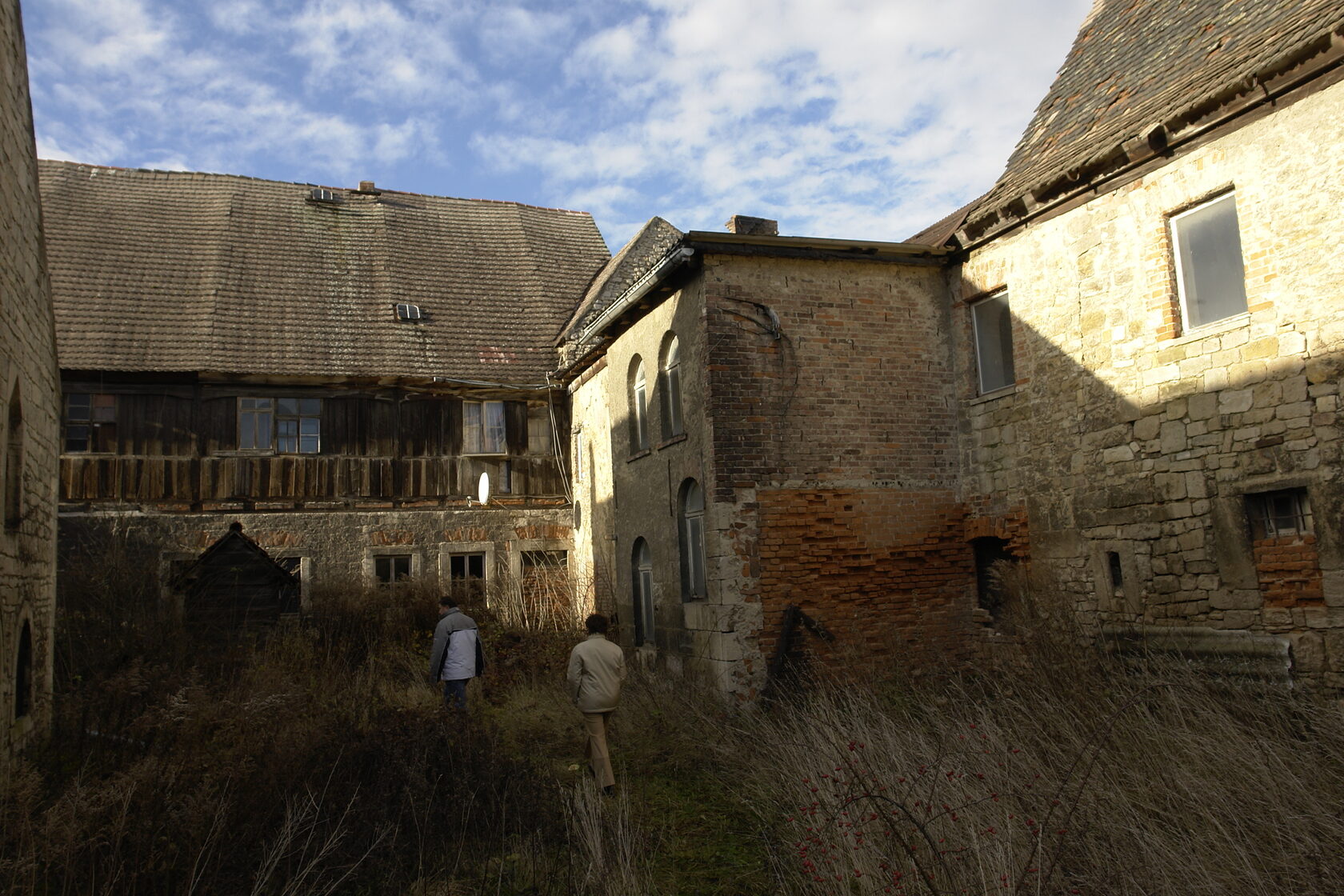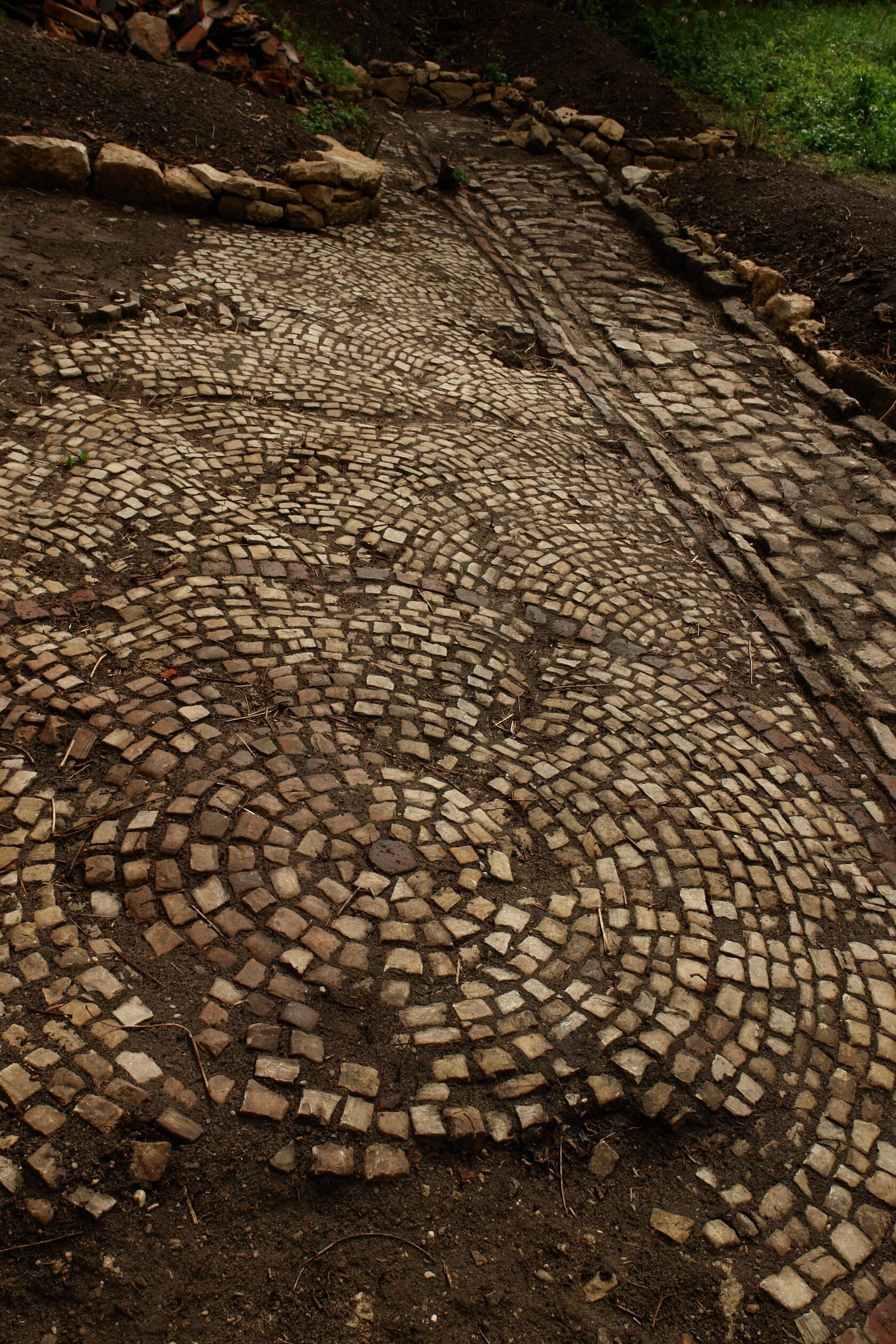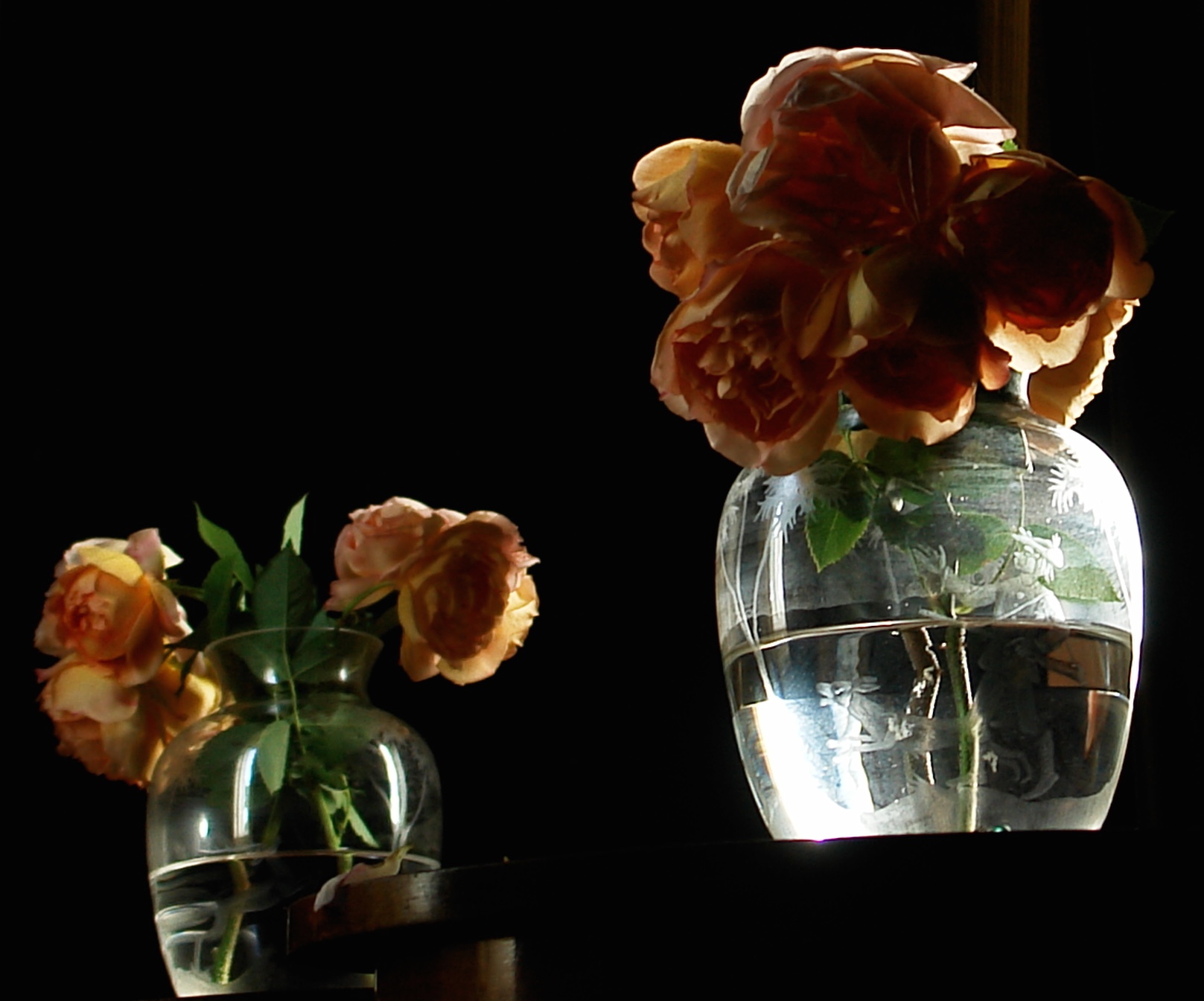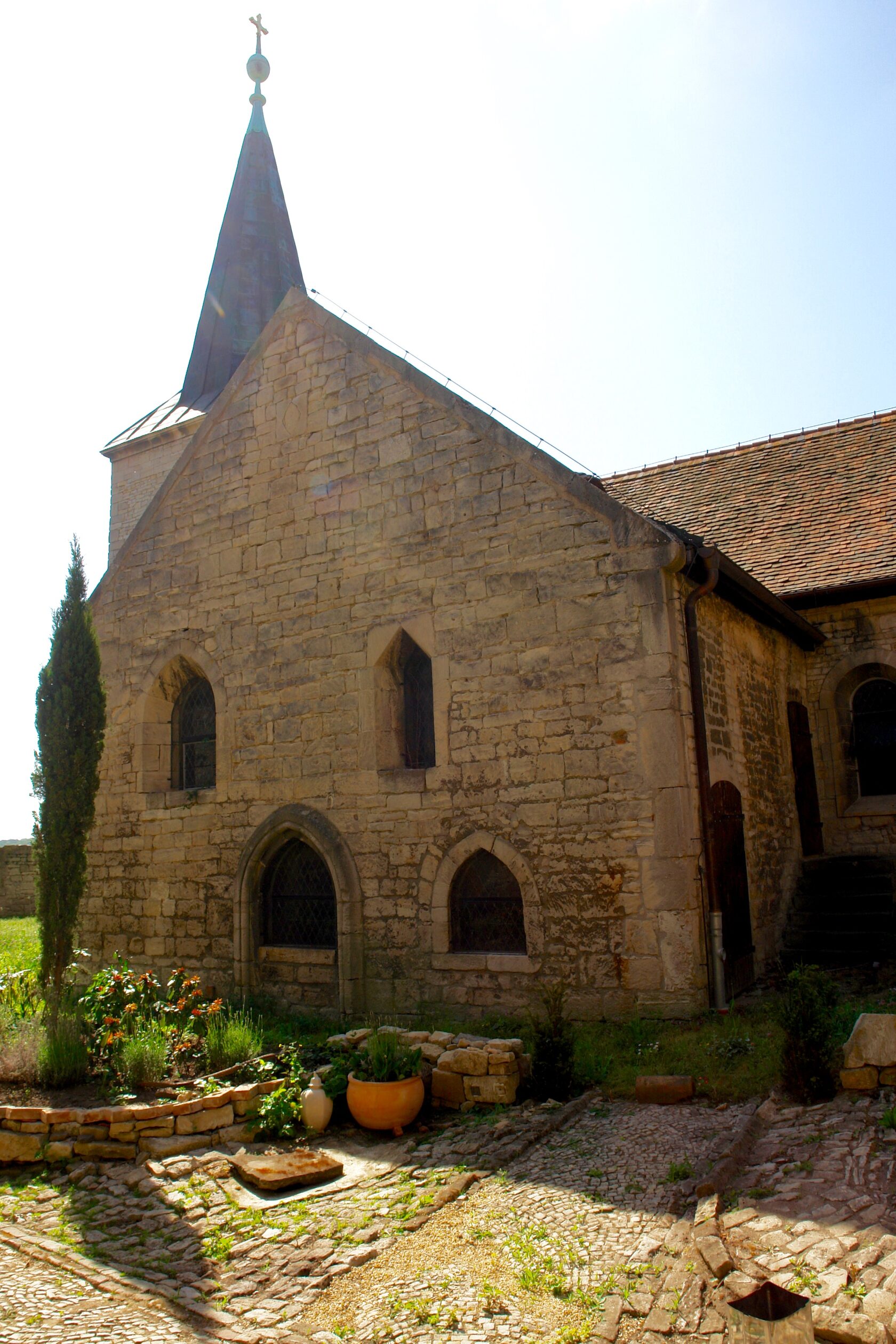Early monasteries, of which our Nunnery is an example, followed a ground plan derived from that of the Roman villa, with the central colonnaded courtyard evolved into the gardens (cloisters). Cloister gardens of the period are set within rectangular bounds and often centered on a fountain, and were designed specifically to foster contemplation. Monasteries had other gardens as well: kitchen gardens (hortus) for vegetables and seasonings, herb gardens (herbularius) for medicinal plants, and — at the west doors of many of the great churches — paradise gardens that produced flowers for decorating the church and also provided sanctuary to fugitives. Over the last few years we have invested considerable time and money into recreating what use to be one of the most sophisiticated gardens of the valley – the garden of the St. Bonifacius Benedictine Nunnery.
Though mush altered and remodelled already in 18 and 19 hundreds, the final blow to the Monastery garden was dealt in 1950s and 60s, then the house and the grounds fell into a complete disrepair (photos taken in Feb. 2013).
Though mush altered and remodelled already in 18 and 19 hundreds, the final blow to the Monastery garden was dealt in 1950s and 60s, then the house and the grounds fell into a complete disrepair (photos taken in Feb. 2013).


During the summer month of 2012 – 2014 more then 300 cubic tonnes of rubbish, waste and soil was excavated and removed. The old stone pavement was discovered, with fragments dating back to 17, 18 and 19cc.

After careful restoration a new garden plan was implemented with the main emphasis on roses – traditional monastic plant, loaded with symbolism and religious significance.
The rose was sacred to a number of goddesses including Isis, whose rose appears in the late classical allegorical novel The Golden Ass as “the sweet Rose of reason and virtue” that saves the hero from his bewitched life in the form of a donkey.[1] The ancient Greeks and Romans identified the rose with the goddess of love, Aphrodite (Greek name) and Venus (Roman name).In Rome a wild rose would be placed on the door of a room where secret or confidential matters were discussed. The phrase sub rosa, or “under the rose”, means to keep a secret — derived from this ancient Roman practice.
Christians used the red rose as a symbol of Jesus – his passion, martyrdom, and resurrection, as well as for Marys motherhood and purity. Mary is mostly linked with the white rose. The roses design also implies the liturgy. Wordsworth surrounds Mary with brilliant roses:
In trellised shed with clustering roses gay,
And, Mary! Oft beside our blazing fire,
When yeas of wedded life were as a day
Whose current answers to the hearts desire.
The rose was sacred to a number of goddesses including Isis, whose rose appears in the late classical allegorical novel The Golden Ass as “the sweet Rose of reason and virtue” that saves the hero from his bewitched life in the form of a donkey.[1] The ancient Greeks and Romans identified the rose with the goddess of love, Aphrodite (Greek name) and Venus (Roman name).In Rome a wild rose would be placed on the door of a room where secret or confidential matters were discussed. The phrase sub rosa, or “under the rose”, means to keep a secret — derived from this ancient Roman practice.
Christians used the red rose as a symbol of Jesus – his passion, martyrdom, and resurrection, as well as for Marys motherhood and purity. Mary is mostly linked with the white rose. The roses design also implies the liturgy. Wordsworth surrounds Mary with brilliant roses:
In trellised shed with clustering roses gay,
And, Mary! Oft beside our blazing fire,
When yeas of wedded life were as a day
Whose current answers to the hearts desire.

It seems that every opening bloom points to another wonderful person in the garden of humanity: Prophet Muhammad is also symbolised with a rose.
Dedicating a rose to the Prophet Muhammad a sufi mystics speak of how “His great personality illuminated the roses color, and his perfect morality is the source of its fragrant sense.” Farid ad-Din Attar (d. 1230), one of the most interesting sufi poets of all time, wrote in his The Rose Garden: In the rose bed, mystery glows. The secret is hidden in the rose.
Great Rumi wrote “That which God said to the rose, and caused it to laugh in full-blown beauty, He said to my heart, and made it a hundred times more beautiful”…
Dedicating a rose to the Prophet Muhammad a sufi mystics speak of how “His great personality illuminated the roses color, and his perfect morality is the source of its fragrant sense.” Farid ad-Din Attar (d. 1230), one of the most interesting sufi poets of all time, wrote in his The Rose Garden: In the rose bed, mystery glows. The secret is hidden in the rose.
Great Rumi wrote “That which God said to the rose, and caused it to laugh in full-blown beauty, He said to my heart, and made it a hundred times more beautiful”…
” When the rose is gone and the garden faded you will no longer hear the nightingale’s song.
The Beloved is all; the lover just a veil.
The Beloved is living; the lover a dead thing.
If love withholds its strengthening care, the lover is left like a bird without care, the lover is left like a bird without wings.
How will I be awake and aware if the light of the Beloved is absent?
Love wills that this Word be brought forth.”
The list of the names of roses currently planted at Klostergarten:
Wollerton Old Hall, David Austin, U.K.
Souvenir de Marcel Prous, Rankin’s, Australia
Westerland, Kordes Rosen, D
William & Kate, David Austin, U.K.
Grace, David Ausin, U.K.
Lady Salisbury, David Ausin, U.K.
Munstead Wood, David Ausin, U.K.
Boule de Neige, Peter Beales Roses Ltd, U.K.
Harlow Carr, David Ausin, U.K.
‘Mme. Alfred Carrière, Rosen von Schultheis, D.
Ernst G. Dörell, Palatine Roses, Canada
Antonia d’Ormois, Museo Giardino, Italia
‘Purple Tiger’ Floribunda rose, Paulsen Roses, DK
…
Further reading:
Medieval gardens: Middle Ages to c1500
http://www.nationaltrust.org.uk/article-1356400618277/
The Beloved is all; the lover just a veil.
The Beloved is living; the lover a dead thing.
If love withholds its strengthening care, the lover is left like a bird without care, the lover is left like a bird without wings.
How will I be awake and aware if the light of the Beloved is absent?
Love wills that this Word be brought forth.”
The list of the names of roses currently planted at Klostergarten:
Wollerton Old Hall, David Austin, U.K.
Souvenir de Marcel Prous, Rankin’s, Australia
Westerland, Kordes Rosen, D
William & Kate, David Austin, U.K.
Grace, David Ausin, U.K.
Lady Salisbury, David Ausin, U.K.
Munstead Wood, David Ausin, U.K.
Boule de Neige, Peter Beales Roses Ltd, U.K.
Harlow Carr, David Ausin, U.K.
‘Mme. Alfred Carrière, Rosen von Schultheis, D.
Ernst G. Dörell, Palatine Roses, Canada
Antonia d’Ormois, Museo Giardino, Italia
‘Purple Tiger’ Floribunda rose, Paulsen Roses, DK
…
Further reading:
Medieval gardens: Middle Ages to c1500
http://www.nationaltrust.org.uk/article-1356400618277/
